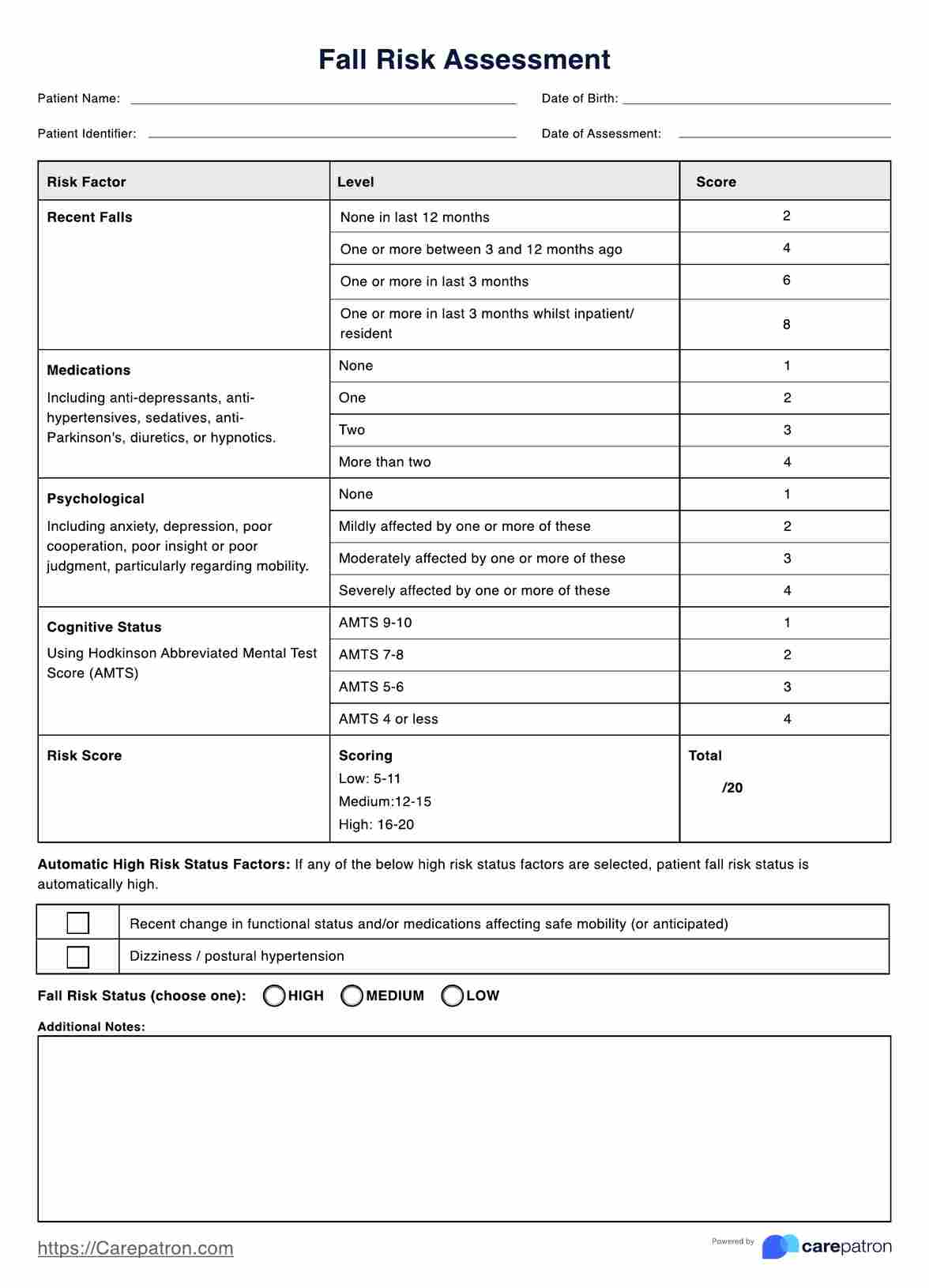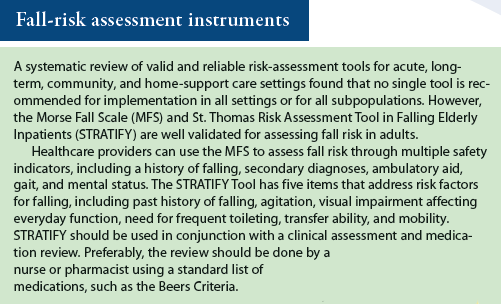The Of Dementia Fall Risk
The Of Dementia Fall Risk
Blog Article
More About Dementia Fall Risk
Table of Contents8 Simple Techniques For Dementia Fall RiskDementia Fall Risk for BeginnersExcitement About Dementia Fall RiskHow Dementia Fall Risk can Save You Time, Stress, and Money.
An autumn threat analysis checks to see exactly how likely it is that you will drop. It is mainly provided for older grownups. The evaluation usually consists of: This includes a collection of questions regarding your overall wellness and if you've had previous drops or issues with balance, standing, and/or strolling. These devices evaluate your strength, balance, and gait (the way you stroll).STEADI includes screening, examining, and intervention. Treatments are recommendations that might minimize your danger of dropping. STEADI consists of 3 actions: you for your threat of succumbing to your danger variables that can be enhanced to attempt to avoid drops (as an example, equilibrium problems, damaged vision) to lower your threat of dropping by utilizing efficient strategies (as an example, giving education and resources), you may be asked several inquiries consisting of: Have you dropped in the past year? Do you feel unsteady when standing or strolling? Are you fretted about dropping?, your copyright will evaluate your toughness, balance, and gait, utilizing the adhering to loss analysis tools: This test checks your gait.
After that you'll take a seat once again. Your supplier will certainly examine the length of time it takes you to do this. If it takes you 12 seconds or more, it might suggest you go to greater risk for a fall. This examination checks strength and balance. You'll sit in a chair with your arms crossed over your breast.
The positions will certainly obtain more challenging as you go. Stand with your feet side-by-side. Move one foot halfway onward, so the instep is touching the huge toe of your other foot. Relocate one foot fully in front of the other, so the toes are touching the heel of your various other foot.
Fascination About Dementia Fall Risk
Most drops occur as an outcome of multiple adding aspects; as a result, taking care of the risk of falling starts with recognizing the aspects that add to fall risk - Dementia Fall Risk. A few of the most relevant threat elements include: Background of prior fallsChronic medical conditionsAcute illnessImpaired stride and equilibrium, reduced extremity weaknessCognitive impairmentChanges in visionCertain risky drugs and polypharmacyEnvironmental aspects can additionally boost the danger for falls, consisting of: Insufficient lightingUneven or harmed flooringWet or slippery floorsMissing or harmed hand rails and get barsDamaged or improperly equipped tools, such as beds, wheelchairs, or walkersImproper use of assistive devicesInadequate supervision of individuals residing in the NF, consisting of those who display hostile behaviorsA successful loss danger monitoring program requires a comprehensive clinical assessment, with input from all members of the interdisciplinary group

The treatment strategy ought to additionally consist of treatments that are system-based, such as those that advertise a risk-free atmosphere (proper lighting, handrails, grab bars, and so on). The effectiveness of the treatments need to be assessed periodically, and the care plan modified as required to show adjustments in the autumn threat assessment. Executing a fall danger monitoring system using evidence-based best practice can minimize the prevalence of falls in the NF, while restricting the possibility for fall-related injuries.
Get This Report about Dementia Fall Risk
The AGS/BGS standard advises screening all grownups matured 65 years and older for autumn threat annually. This screening is composed of asking people whether they have actually dropped 2 or even more times in the previous Get More Info year or sought hop over to here medical attention for an autumn, or, if they have actually not fallen, whether they feel unsteady when strolling.
Individuals that have actually dropped when without injury needs to have their equilibrium and gait assessed; those with gait or equilibrium problems should receive additional analysis. A background of 1 fall without injury and without stride or balance problems does not warrant further evaluation past continued annual autumn risk testing. Dementia Fall Risk. A loss threat assessment is needed as component of the Welcome to Medicare exam

The Buzz on Dementia Fall Risk
Documenting a drops history is among the quality signs for fall avoidance and administration. A crucial part of threat analysis is a medication evaluation. Several classes of drugs increase fall threat (Table 2). copyright medications specifically are independent predictors of drops. These drugs have a tendency to be sedating, alter the sensorium, and harm balance and stride.
Postural hypotension can often be eased Home Page by minimizing the dosage of blood pressurelowering medicines and/or stopping drugs that have orthostatic hypotension as a negative effects. Use above-the-knee assistance hose pipe and copulating the head of the bed raised might likewise lower postural decreases in blood pressure. The preferred components of a fall-focused physical examination are received Box 1.

A pull time above or equivalent to 12 secs suggests high fall danger. The 30-Second Chair Stand examination examines reduced extremity stamina and balance. Being not able to stand from a chair of knee height without utilizing one's arms shows increased fall threat. The 4-Stage Equilibrium examination examines fixed balance by having the patient stand in 4 placements, each considerably much more tough.
Report this page